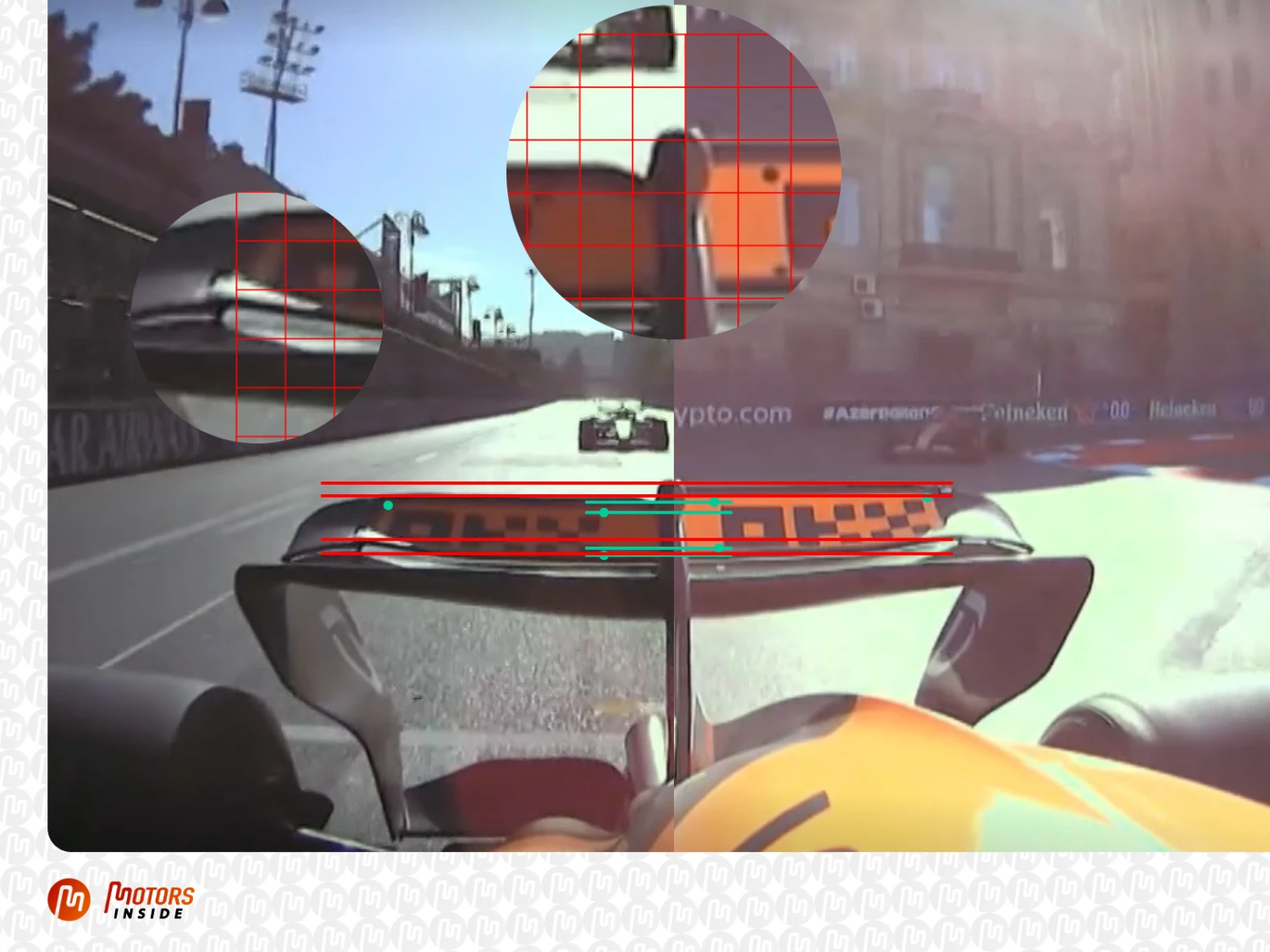The rear wing of the McLarens is causing controversy after the Grand Prix in Baku, analysis
The Azerbaijan Grand Prix revealed a phenomenon that did not fail to spark discussion: the particularly flexible rear wing of the McLarens. This issue, which had already sparked debates in the past, resurfaces, fueled by recent videos showing unusual deformations on Piastri's McLaren.
Formula 1 is facing a new technical controversy. During the Baku Grand Prix, the intense battle between Oscar Piastri and Charles Leclerc highlighted a phenomenon that did not escape the observers and fans: the use of flexible wings. Already a subject of debate in the past, this issue is now back in the spotlight with videos showing intriguing deformations on the Australian driver’s McLaren.
McLaren in the spotlight
During the second part of the Grand Prix, the cameras captured a disturbing element: the rear wing of Oscar Piastri’s McLaren MCL38, which appeared to be deforming as the car picked up speed on the long straight of Baku.
We can observe that the upper section of the rear wing, usually activated with the DRS, opens slightly during the final straight of the circuit. As the speed increases, the gap seems to widen, although Piastri’s McLaren is in front of Leclerc, without benefiting from any advantage linked to the DRS.
This detail quickly fueled discussions about the legality of flexible wings, and videos became viral on social networks. Some fans even went so far as to directly call out Ferrari, encouraging the Italian team to take action against McLaren.

Innovation or Infraction? The technical challenges
The images clearly show that the upper flap of the rear wing of the McLaren deforms at high speed, increasing the gap between this flap and the base of the wing. Although more visible on the McLaren, a similar movement can be noticed, to a lesser extent, on Charles Leclerc’s Ferrari.
This flexibility has an obvious technical advantage: by reducing drag in a straight line, it allows higher top speeds to be reached. However, it is difficult to determine the advantage this provides in terms of time gained. Nevertheless, the strict technical controls of the FIA have not revealed any infractions on the McLaren cars or those of other teams so far.
Towards reinforced control of the FIA?
In response to these events, the FIA has stepped up monitoring of the wings, using specific cameras to analyze high-speed aerodynamic movements. Although no official irregularity has been confirmed, this attention could prompt the Federation to strengthen its inspections for the 2025 season.
Christian Horner, the team principal of Red Bull, also expressed his opinion on the matter, stating that if the FIA does not tighten its controls, all teams could go down this path: « If this is deemed acceptable, it obviously encourages you to seek similar solutions of your own. The regulator, for its part, obviously has all the information at its disposal. They have all the analyses, and they have recently installed cameras on many cars. They collect this data. But yes, it’s one of those things where, as I said, if it’s deemed acceptable, you explore this path. »
Innovation related to flexible fins could quickly become an area of conflict if regulations do not evolve.
McLaren in compliance with the law, but for how long?
Although the FIA’s static tests did not detect any infractions by McLaren or other teams, it is clear that the Woking team has taken the lead in the field of flexible materials.
This controversy could push the FIA to review its control procedures to prevent these innovations from creating a new gray area in the regulations.
